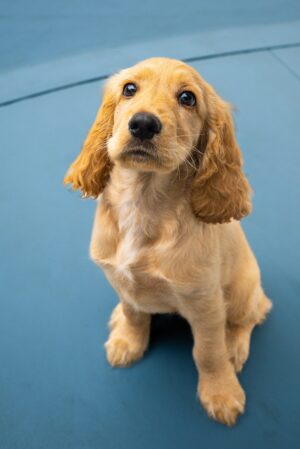Professional dog grooming is an essential aspect of responsible pet ownership. Pet owners understand the importance of maintaining their furry companions’ hygiene, health, and overall well-being. The diverse world of dog breeds presents unique challenges when it comes to grooming. From the luxurious coats of long-haired breeds to the minimal maintenance required for short-haired ones, a tailored grooming approach is key. In this comprehensive guide, we will delve into the intricacies of grooming for different breeds, emphasizing the significance of professional dog grooming, the emergence of pet spas, and the evolving landscape of the pet grooming industry.
The Rise of Professional Dog Grooming
The Importance of Professional Dog Grooming
Professional dog grooming has evolved beyond a simple aesthetic service to become an integral part of a dog’s overall health. Regular grooming not only enhances a dog’s appearance but also prevents various health issues. Trained groomers possess the expertise to identify skin problems, ear infections, or dental issues that might go unnoticed by pet owners. Their skills extend beyond mere aesthetic considerations, contributing to the well-being of the canine companion.
- Pet Grooming as Preventive Care
Pet grooming is not just about making dogs look good; it’s about keeping them healthy. Brushing, nail trimming, and ear cleaning are essential components of preventive care. Regular grooming helps in the early detection of parasites, skin infections, and abnormalities that might indicate underlying health issues. As the saying goes, prevention is better than cure, and professional groomers play a pivotal role in maintaining a dog’s health proactively.
Tailoring Grooming Approaches for Different Breeds
Understanding the Diversity of Dog Breeds
Dogs come in various shapes, sizes, and coat types. Each breed has unique grooming requirements influenced by factors such as coat length, texture, and overall health. Tailoring your grooming approach based on the specific needs of each breed ensures that the dog receives optimal care.
- Long-Haired Breeds
Long-haired breeds, such as the Afghan Hound or the Shih Tzu, require meticulous grooming to prevent matting and tangling. Regular brushing is essential to keep their coats silky and free from debris. Professional groomers with expertise in dealing with long-haired breeds know the importance of using the right tools and products to maintain the coat’s health and shine.
- Short-Haired Breeds
Short-haired breeds, like the Beagle or the Dachshund, may not require as much maintenance, but regular grooming is still crucial. Brushing helps remove loose hair and stimulates the skin, promoting a healthy coat. Professional dog groomers adept at handling short-haired breeds understand the specific grooming needs and focus on enhancing the natural shine of the coat.
- Double-Coated Breeds
Breeds with double coats, such as the Siberian Husky or the Chow Chow, have a soft undercoat beneath a coarser outer layer. Grooming these breeds involves regular brushing to remove loose undercoat hair and prevent matting. Professional groomers have the skills to manage double-coated breeds effectively, ensuring a healthy coat and minimizing shedding.
The Emergence of Pet Spas
The Changing Landscape of Pet Grooming
In recent years, pet grooming has transcended the traditional salon setting, giving rise to the concept of pet spas. These specialized facilities offer a more holistic approach to grooming, incorporating spa-like treatments and relaxation techniques for pets. Pet spa go beyond the basic grooming needs, providing an indulgent experience for furry clients.
- Spa Treatments for Dogs
Pet spas offer a range of spa treatments designed to pamper and relax dogs. From aromatherapy baths to pawdicures (pedicures for dogs), these spa services aim to enhance the well-being of pets. The calming environment of a pet spa contributes to stress reduction, benefiting both the mental and physical health of the dogs.
- Grooming as a Stress-Free Experience
Professional dog groomers in pet spas are trained not only in grooming techniques but also in handling dogs with various temperaments. The goal is to create a stress-free and enjoyable grooming experience for the pets. This is particularly important for dogs that may feel anxious or uncomfortable during grooming sessions. The calming atmosphere of a pet spa, coupled with the expertise of groomers, ensures a positive grooming experience for dogs of all breeds.
The Evolving Landscape of the Pet Grooming Industry
Technology in Pet Grooming
The pet grooming industry has embraced technology to enhance efficiency and service quality. From online booking systems to grooming apps, technology has streamlined the grooming process, making it more convenient for pet owners. Additionally, innovations in grooming tools and equipment contribute to a more comfortable and effective grooming experience for dogs.
- Specialized Grooming Products
The demand for specialized grooming products has grown significantly, catering to the unique needs of different breeds. Shampoos for sensitive skin, brushes designed for specific coat types, and dental care products are examples of the specialized grooming items available. Professional dog groomers stay updated on the latest products and use them judiciously to provide customized care for each dog.
- Continuing Education for Groomers
The pet grooming industry recognizes the importance of ongoing education for groomers. With new breeds emerging and grooming trends evolving, staying informed is crucial for providing top-notch services. Professional dog groomers attend workshops, seminars, and training programs to refine their skills and stay abreast of the latest developments in grooming techniques and technologies.
Conclusion
Grooming for different dog breeds requires a tailored approach that considers the unique characteristics of each breed. Professional dog grooming has become a vital aspect of preventive care, contributing to the overall health and well-being of our canine companions. The emergence of pet spas reflects a shift towards more holistic grooming experiences, emphasizing relaxation and stress reduction for pets. As the pet grooming industry continues to evolve, embracing technology and specialized products, the future looks promising for ensuring that our furry friends receive the best possible care tailored to their individual needs.

